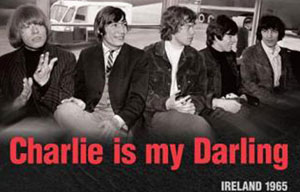Zhangzhou bares its soul through public art
Updated: 2013-08-01 23:41
By Lin Qi (China Daily)
|
||||||||
Young sculptor Liu Qing anticipated criticism as he worked on G4472, an installation recreating daily scenes in a subway carriage.
The work portrays the behavior and expressions of passengers who sit on a long bench. It is on show with 30-odd other multimedia works at a public art exhibition, inside a park in Zhangzhou, Fujian province.
 |
|
Liberation, an installation by Bi Heng, on display at the show All the Way from Kassel.Provided to china daily |
Viewers linger over the installation's second part: A boy kisses a girl who sits on his lap, both of them in middle school uniforms, a half-bitten green apple is beside them. The daring teenage couple is considered "not suitable for public viewing" by many visitors and older passers-by who walk with grandchildren avoid the scene.
Defending his work, Liu asks people to ponder how people learn about love and relationships. "People simply use negative words, such as shameful and wrong, when discussing the issue. But the more important thing is to tell teenagers how to deal with it when they fall for someone."
G4472 is not the only art to widen people's visions at the exhibition, titled All the Way from Kassel, which was inspired by Documenta, the world-class art event held every five years in Kassel, Germany.
Mu Boyan's two sculptures feature the naked, fat man that becomes a recurring subject in his creations. In one work, the man stands at the top of a ladder and peeks into a building through an open window, while in another he crouches in a lakeside pavilion and gazes outside.
Ever since it was incorporated into city development strategies some 40 years ago, "public art" has taken art from museums and theaters to the streets, even though it doesn't always appear in an eye-pleasing way.
In China, which has experienced faster urbanization than many countries over the past three decades, the eruption of public art in recent years has been coupled with heated debates not only over aesthetic judgments, but also social values, transparency of city administration and uniqueness of a city.
"In 1980 when China's reform and opening-up was in its infancy, the urbanization rate was only 19 percent. It surged to 52.6 percent last year, which means that urban residents outnumbered rural population for the first time," Zhu Di, deputy director of the arts department under the Ministry of Culture, says on an art forum on the sidelines of the exhibition.
"During this rapid process of urbanization, the public art has helped bring a modern look to traditional culture and boosted urban culture. Meanwhile it is subjected to continuous skepticism and has provoked thoughts in various areas," he adds.
Many cities are producing time-consuming, expensive yet similar looking public art works. More people have come to realize that it is a shortage of neither money nor creativity, but a lack of sensitivity and understanding of public art that hinders them from boasting a really dynamic urban culture.
"Chinese public art today doesn't have character. A work of art with character is not necessarily good, but it is the basic quality," says artist Chen Wenling.
His two gigantic stainless steel sculptures, Reincarnation of Mammoth and Chinese Landscapes No 2, are on display.
He says most works are massively produced at a fast pace in factories, and artists have to complete as many ordered works as possible.
"One has to have the same feeling of a difficult birth if creating a good piece of art."
Meanwhile, who has a say on the placement of public artworks is another issue that needs to be tackled. The voices of ordinary urban dwellers sound rather weak in the decision-making process, compared with that of the administrative powers and commercial interests.
"It's been a global trend that the public art in cities is becoming more life-oriented. It promotes social equity, harmony and freedom," says Yin Shuangxi, a professor with Central Academy of Fine Arts.
"The public art is no longer a pure concept of fine arts that fulfills the needs of the elite. The management of urban public art will seek more sources of inspiration from citizens and nongovernmental institutions," he says.

 'Despicable' minions upset Depp's 'Lone Ranger' at box office
'Despicable' minions upset Depp's 'Lone Ranger' at box office
 'Taken 2' grabs movie box office crown
'Taken 2' grabs movie box office crown
 Rihanna's 'Diamonds' tops UK pop chart
Rihanna's 'Diamonds' tops UK pop chart
 Fans get look at vintage Rolling Stones
Fans get look at vintage Rolling Stones
 Celebrities attend Power of Women event
Celebrities attend Power of Women event
 Ang Lee breaks 'every rule' to make unlikely new Life of Pi film
Ang Lee breaks 'every rule' to make unlikely new Life of Pi film
 Rihanna almost thrown out of nightclub
Rihanna almost thrown out of nightclub
 'Dark Knight' wins weekend box office
'Dark Knight' wins weekend box office
Most Viewed
Editor's Picks

|

|

|

|

|

|
Today's Top News
47% Chinese urbanites have smartphones: Google
US supplying info on Chinese vessels: Manila
Hollywood, China still at odds over tax
US get more Chinese teachers
7.5% GDP growth 'in reach' this year
Surveillance plan files declassified
UN to probe alleged Syria chemical attacks
Saudi blogger faces lashes for 'insulting Islam'
US Weekly

|

|








